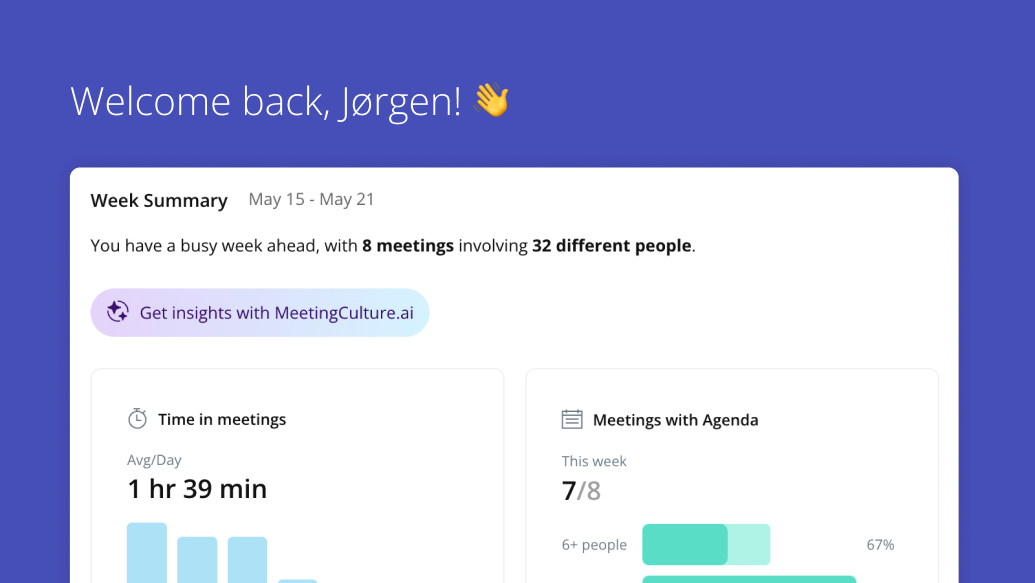How to run a great virtual meeting
We gathered 7 of our best tips to help you run a productive virtual meeting.
Whether you’re new to working from home or have been a remote employee for years, virtual meetings can be a challenge. We gathered seven of our best tips to help you run a productive virtual meeting.
Virtual meetings have a reputation for being less valuable than face-to-face meetings because it is assumed people are multi-tasking – from checking emails to being wholly disengaged. However, as the number of teams who are connecting remotely has multiplied, meetings are critical because they provide structured opportunities for team members to interact. They also provide opportunities to build engagement, trust and candor.
Planning and running virtual meetings requires more structure than in-person meetings to ensure participants stay on track.
I. Use the right technology
Does your team need a simple solution that allows for conference calls or do you want to be able to video chat? How important is it that a solution allows you to connect and engage before the meeting?
There are dozens of virtual meeting providers, from Zoom to Skype to WebEx to Microsoft Teams. We like Microsoft Teams because its capabilities extend beyond video conferencing to allow for pre-meeting discussions and post-meeting recaps. It also gives users access to dozens of applications like Decisions that help you bring more structure to the meeting content, like agendas and minutes.
Don’t forget your personal technology: Make sure you have a strong Wi-Fi connection, use a proper headset and turn on your video.
II. Agendas are the foundation to productive meetings
A structured agenda increases meeting preparation, engagement and energy. Do not rely on bullet points. Instead, a good agenda includes these elements: Input on agenda topics from team members, assigned topic owners, clear purpose for each topic, relevant documents attached to the agenda, questions to get people thinking about the agenda in advance and enough time for each topic.
III. Keep the meeting focused
There are more distractions when people work from home and unlike in-person meetings, virtual meetings lack many of the informal and non-verbal cues that keep participants from talking over one another.
All necessary meeting materials should be included in the well-structured agenda you’ve created – attendee list, location, topic objectives, links and descriptions, and attachments. Identify a timekeeper and a note-taker ahead of each meeting to keep things moving forward, and leverage the time-keeping functionin the meeting technology used by your team.
IV. Implement a process for questions and comments
We’ve all seen the video, “Conference Calls in Real Life” from comedians Tripp and Tyler. It’s funny because it’s true.
The larger the meeting, the more important it is to have a process for things like taking attendance, allowing people to ask questions and participate in dialogue. Few things are more frustrating than people talking over one another or the back-and-forth of, “Oh no. You go. Okay… Oh. Sorry. No, you.”
V. Be on time
Join the virtual meeting early as often as possible and set expectations that all participants should do the same. It is disruptive when someone new beeps into a conference call or a new avatar pops on the screen.
VI. Take clear meeting minutes
Good meeting minutes capture the purpose of a meeting and the agreed upon outcomes, serving as a record for reference later. They ensure a common recollection of the topics discussed, elements agreed to and important tasks to be completed. More formal meetings might require detailed minutes that outline discussions. Less formal meetings should focus on capturing decisions and tasks. Read more: How to write great meeting minutes
VII. Summarize action items
Clearly outline meeting takeaways to eliminate confusion and hold people accountable. Summarize tasks and decisions at the end of each meeting, communicate them clearly in the meeting minutes and ensure they are reflected in any project management or team productivity plans. Summarizing these takeaways gives participants a final opportunity to clarify remaining questions and reminds people of their specific action items. It’s also a good idea to review them at the start of the next meeting.
Decisions can help
With Decisions, users can create structured, collaborative agendas, build meeting minutes with a single click, use smart-language technology to assign tasks right from the minutes and run more focused and efficient virtual meetings, all from their existing workplace productivity tools within Office 365.
Download Decisions from AppSource and get started today.

